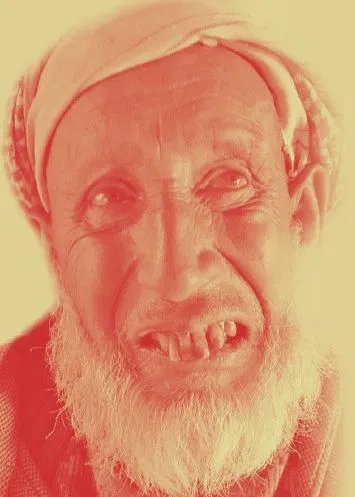BY LAILA SULTANA
Providing physiotherapy to older people is both a challenge and a need. As we age, our body naturally goes through many physical changes that include reduced muscle strength, reduced bone density, reduced flexibility, weaker joints and increased pain levels.
Physiotherapy cannot stop ageing but it can help to reduce the impact it has on our lifestyle.
What is the role of a physiotherapist
When it comes to geriatric rehabilitation, the role of the therapist becomes extremely critical.
This is due to the delicate and complex nature of health conditions in this age group. The benefits of having a therapist include:
1. She/he will take a wide range view of the patient, their medical history, activities, and environment to create a customised treatment plan specific to the needs of the patient.
2. The therapist will include a wide range of complementary approaches to alleviate the health issues effectively instead of having a single approach. This helps the patient in healing faster.
3. She/he will keep the therapy programme dynamic to adapt it to the ability of the patient.
4. She/he will educate about the risks associated with certain sets of exercises that can prove detrimental or dangerous.
5. Besides exercises, the therapist will also guide the patient on managing a good lifestyle, planning their diet, and provide postural education. All these have a great impact on improving the outlook of the patient and enhancing her/his wellness.
How does physiotherapy work for the elderly?
1. Several elders wonder about how physiotherapy works for their specific problems. Not only does physiotherapy play a critical role in the management of their problems but geriatric physiotherapy has already become a speciality study.
2. Besides suffering from cardiovascular and skeletal problems, many issues in the aged population occur because the patient does not simply use their limbs. The level of physical activity and daily exercise is extremely low.
3. Whether an older person turns to physiotherapy as a treatment after suffering an injury or a disease, others may be referred to it by their doctors for specific problems, this is how you need to approach physiotherapy:
4. Once you discuss your symptoms with your doctor, she/he will refer you to a physiotherapist.
5. The first visit to the physiotherapist is usually about an assessment of your medical history, a detailed discussion about the symptoms, and the range of physical abilities that you have.
6. The therapist will then examine the concerned area, detail your condition to you, and develop a treatment plan for you.
What are the benefits of physiotherapy for seniors?
1. The benefits of geriatric physiotherapy are well-established in solving, preventing, treating, and managing a range of issues. It is especially important in:
2. Treatment of pains: Physiotherapy is effective in alleviating pains in the neck, back, and joints that occur commonly in seniors. It helps in increasing blood flow, flexibility, mobility, and core strength.
3. Improved bone strength: Since several seniors suffer from reduced bone density diseases like arthritis and osteoporosis and an increase in the risk of fractures and falls, strength training can greatly help them. It helps in training them on not only how to strengthen their joints but also how and where to use this strength. It also improves the range of motion in the joints and muscles.
4. Building strength: Seniors are a risk of fall-related injuries and physiotherapy helps in building strength to maintain core balance and independence to avoid falls.
5. Better heart health: Exercising has proved to have a great impact on not only preventing cardiac diseases but also on their management and treatment. Engaging in physiotherapy daily can help reduce the possibility of strokes, heart attacks, heart failure, arrhythmia, coronary artery disease, etc.
6. Mental health benefits: One of the most important physiotherapy benefits is the alleviation of pain, reduction in joint stiffness, and treatment of other problems. This has a direct impact on reducing pain-related anxiety and depression.
7. Getting independent: Since physiotherapy helps in building strength, makes you more mobile, it has a great impact on the level of independence and the quality of life without having to depend too much on others. This has a huge impact on the positive and long-term rehabilitation of elderly patients.
What are the types of exercises that help the elderly
Depending on the conditions that you suffer from and the severity of its symptoms, your physiotherapy sessions will combine an assortment of therapies. Some of the most common types of rehabilitation exercises for the elderly include:
1. Manual therapies: These include massaging the muscles and the body’s tissues to help the patient in relaxing, improving blood circulation, improving flexibility, and relieving pain and discomfort. This also includes mobilisation or the use of slow movements to twist & pull joints and manipulation that uses fast movements.
2. Heat therapy: This is a great way to relax stiff muscles and improve blood circulation. This is very beneficial for people suffering from osteoarthritis and conditions that immobilise seniors.
3. Cold therapy: This is beneficial for people suffering from bone diseases like arthritis, etc. and helps in relieving pain, swelling, and inflammation.
4. Electrotherapy: Beneficial for stroke and arthritis patients, electrical stimulation is a great way to reduce pain quickly.
5. Hydrotherapy: Water aerobics is a great way to heal soft tissues, improve the flow of blood, and relaxing the body.
Ageing is not about a lost youth but a new stage of opportunity and strength.
Live your life and forget your age.
Laila Sultana is MPT Neurology and Geriatric Physiotherapist
Disclaimer: The views and opinions expressed in this article are the personal opinions of the author.
The facts, analysis, assumptions and perspective appearing in the article do not reflect the views of GK.






